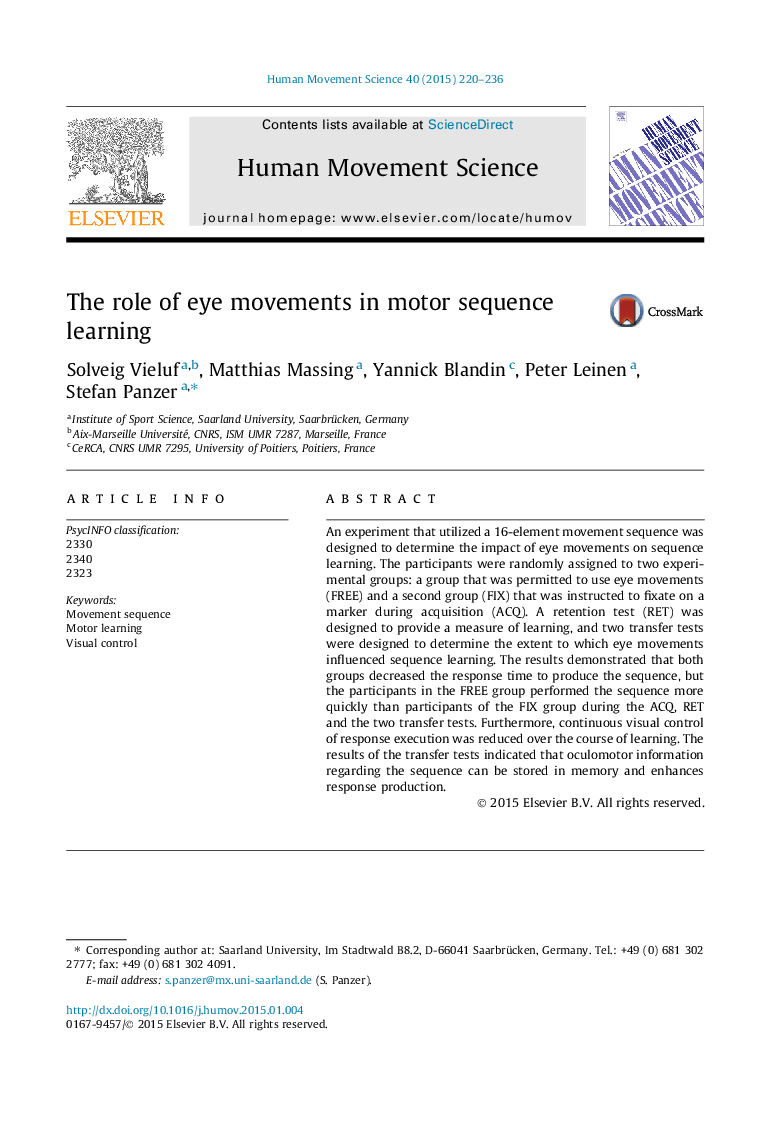| Article ID | Journal | Published Year | Pages | File Type |
|---|---|---|---|---|
| 7292106 | Human Movement Science | 2015 | 17 Pages |
Abstract
An experiment that utilized a 16-element movement sequence was designed to determine the impact of eye movements on sequence learning. The participants were randomly assigned to two experimental groups: a group that was permitted to use eye movements (FREE) and a second group (FIX) that was instructed to fixate on a marker during acquisition (ACQ). A retention test (RET) was designed to provide a measure of learning, and two transfer tests were designed to determine the extent to which eye movements influenced sequence learning. The results demonstrated that both groups decreased the response time to produce the sequence, but the participants in the FREE group performed the sequence more quickly than participants of the FIX group during the ACQ, RET and the two transfer tests. Furthermore, continuous visual control of response execution was reduced over the course of learning. The results of the transfer tests indicated that oculomotor information regarding the sequence can be stored in memory and enhances response production.
Related Topics
Life Sciences
Neuroscience
Cognitive Neuroscience
Authors
Solveig Vieluf, Matthias Massing, Yannick Blandin, Peter Leinen, Stefan Panzer,
